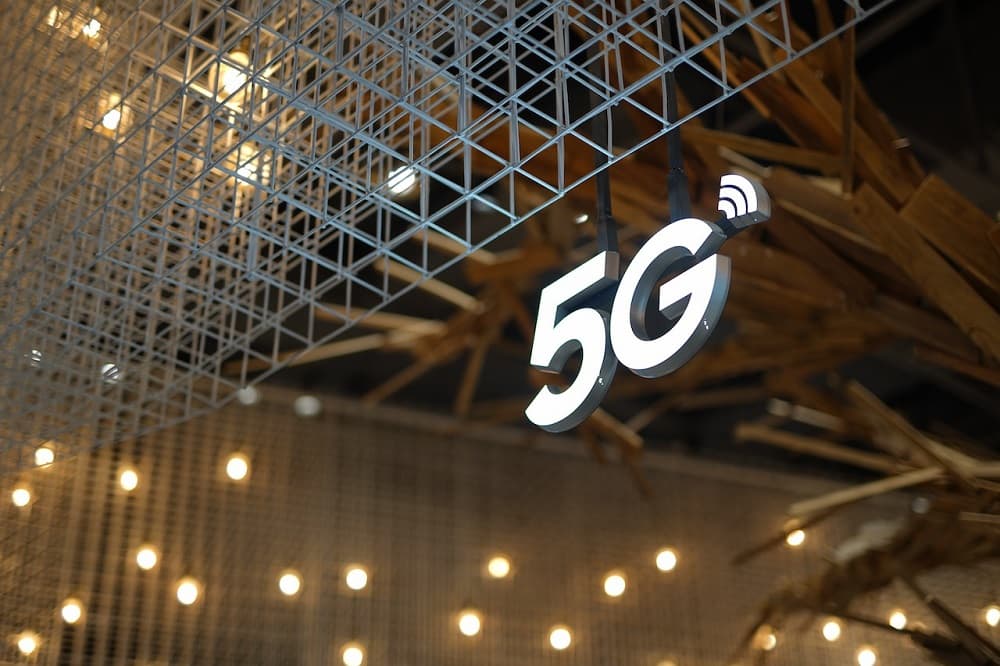The Internet of Things (IoT) is a network of interconnected devices that communicate and share data without human intervention. From smart homes to industrial automation, IoT has already transformed various industries. However, traditional network technologies have faced challenges in meeting the demands of IoT applications.
This is where 5G comes in, with its promise of revolutionizing IoT with faster connectivity, low latency, scalability, and more. In this article, we will explore how 5G is reshaping the IoT landscape and paving the way for a more connected and intelligent future.
Table of Contents
How 5G Enables Faster and More Reliable Connectivity
5G brings a significant improvement in terms of connectivity, allowing IoT devices to connect faster and more reliably than ever before. The key factors contributing to this transformation are higher bandwidth and advanced modulation techniques. With 5G, devices can transmit and receive large volumes of data quickly, facilitating seamless interactions between IoT devices and enabling more sophisticated applications.
Implementing 5G-enabled IoT connectivity:
- Deploy 5G infrastructure and ensure coverage in the desired area.
- Connect IoT devices to the 5G network using compatible communication modules.
- Optimize network settings and ensure compatibility with IoT device protocols.
Low Latency and Real-Time Communication
One of the most significant advantages of 5G in IoT is its low latency, which refers to the time it takes for data to travel between devices. With 5G’s ultra-low latency, real-time communication becomes a reality for IoT applications. This means that devices can exchange information and respond to commands almost instantaneously, enabling seamless and immersive experiences.
Implementing low latency in 5G-enabled IoT applications:
- Utilize edge computing: By processing data closer to the edge of the network, latency can be reduced significantly. Implement edge computing technologies to perform real-time analytics and decision-making at the edge, ensuring faster response times.
- Optimize data transmission protocols: Choose efficient protocols that minimize latency, such as the Message Queuing Telemetry Transport (MQTT) protocol or the Constrained Application Protocol (CoAP).
- Prioritize traffic: Implement Quality of Service (QoS) mechanisms to prioritize critical IoT traffic, ensuring that time-sensitive data receives higher priority and lower latency.
Scalability and the Expansion of IoT
The scalability of IoT ecosystems has been a challenge in the past, with the limitations of previous network technologies hindering the growth and expansion of IoT deployments. 5G addresses these challenges by providing enhanced scalability, allowing a vast number of devices to connect simultaneously. This opens up new possibilities for large-scale IoT deployments across industries.
Implementing scalability in 5G-enabled IoT deployments:
- Opt for Narrowband IoT (NB-IoT): NB-IoT is a low-power, wide-area network technology that enables the connection of numerous IoT devices in a cost-effective manner. Utilize NB-IoT to accommodate a massive number of devices and scale your IoT deployment.
- Leverage network slicing: 5G’s network slicing allows the partitioning of the network into multiple virtual networks, each tailored to specific IoT applications. This enables efficient resource allocation and ensures scalability for different IoT use cases.
Edge Computing and Distributed Intelligence
Edge computing is a critical component in the convergence of 5G and IoT. By bringing computational power closer to the data source, edge computing reduces latency and enables real-time processing, enhancing the capabilities of IoT applications. This distributed intelligence empowers IoT devices to make faster decisions and perform complex tasks without relying solely on cloud resources.
Implementing edge computing in 5G-enabled IoT systems:
- Deploy edge computing nodes: Install edge servers or gateways in close proximity to IoT devices to enable local processing and data analysis. This reduces the need for back-and-forth communication with the cloud, minimizing latency.
- Utilize machine learning algorithms: Train machine learning models on edge servers to enable local intelligence and decision-making. This allows IoT devices to analyze data and respond autonomously, enhancing efficiency and responsiveness.
- Ensure security at the edge: Implement robust security measures at the edge to protect sensitive data and mitigate potential vulnerabilities. Utilize encryption, access control, and secure protocols to safeguard IoT devices and data.
Enhanced Data Transfer and Analytics
5G revolutionizes data transfer and analytics in IoT by enabling high-speed, reliable transmission of large volumes of data. This empowers organizations to gather and analyze vast amounts of real-time data, leading to actionable insights and improved decision-making.
Implementing enhanced data transfer and analytics in 5G-enabled IoT:
- Utilize data aggregation: Collect and combine data from multiple IoT devices to gain a comprehensive view of operations and derive valuable insights.
- Implement real-time analytics: Use 5G’s low latency and high-speed capabilities to perform real-time analytics on the collected data. This allows for immediate detection of patterns, anomalies, and opportunities for optimization.
- Employ advanced analytics techniques: Leverage machine learning and AI algorithms to extract meaningful insights from IoT data. This can help in predictive maintenance, anomaly detection, and optimization of processes.
- Implement data storage and processing at the edge: With the help of edge computing, store and process critical data at the edge of the network. This reduces latency and minimizes the amount of data transferred to the cloud, enabling faster and more efficient analytics.
Conclusion
The integration of 5G and IoT is poised to transform industries and reshape the way we interact with smart devices and applications. With faster connectivity, low latency, scalability, edge computing, and enhanced data transfer, 5G opens up a world of possibilities for IoT deployments. From smart homes and cities to industrial automation and healthcare, the combination of 5G and IoT promises to revolutionize our lives, making them more connected, intelligent, and efficient.
By embracing the implementation steps mentioned above, organizations can harness the power of 5G to create innovative IoT solutions, drive digital transformation, and unlock new opportunities for growth and efficiency.
With 5G revolutionizing the Internet of Things, the future holds tremendous potential for a truly connected world, where smart devices seamlessly communicate, analyze data, and respond in real time, transforming industries and improving our everyday lives.








